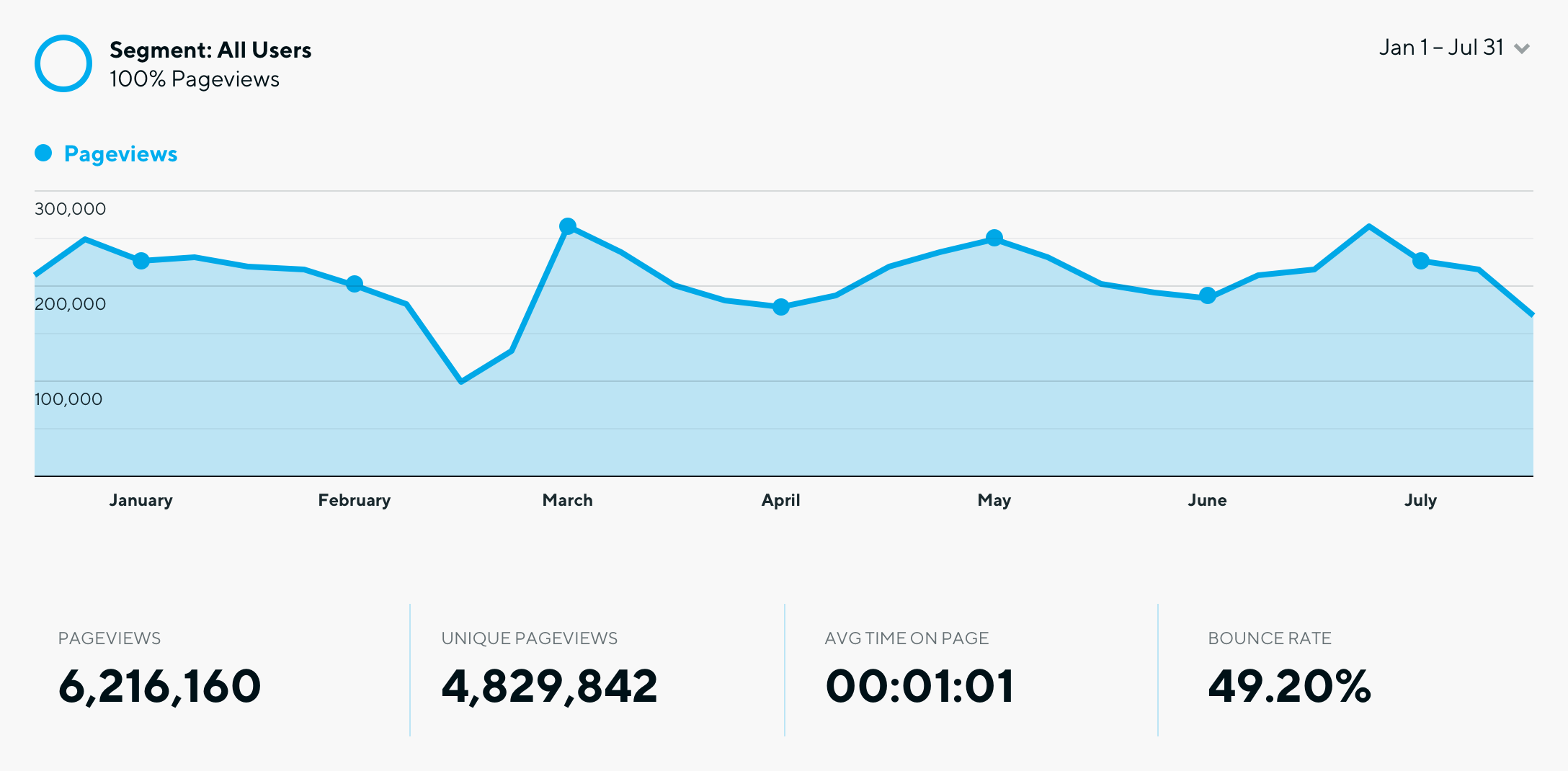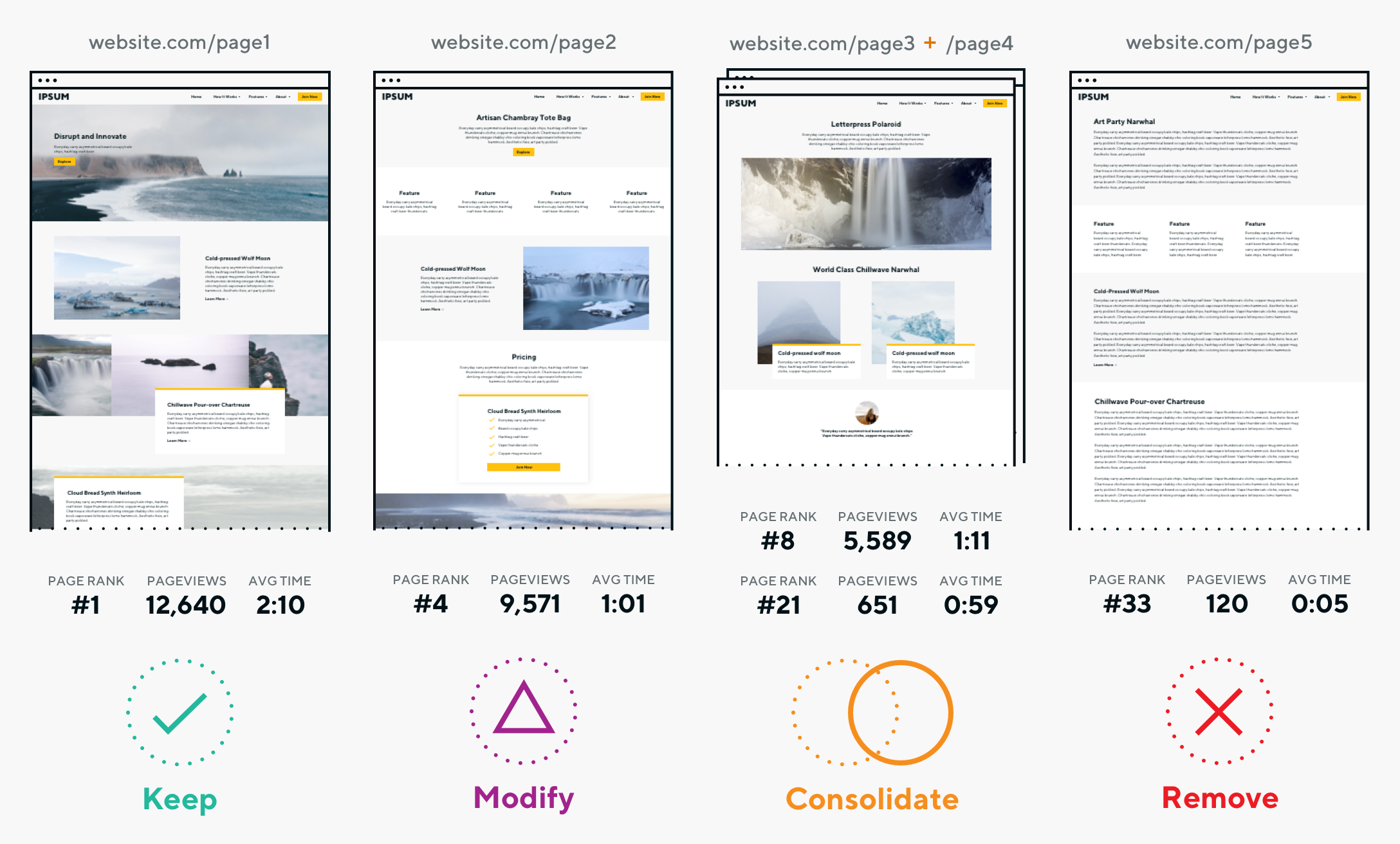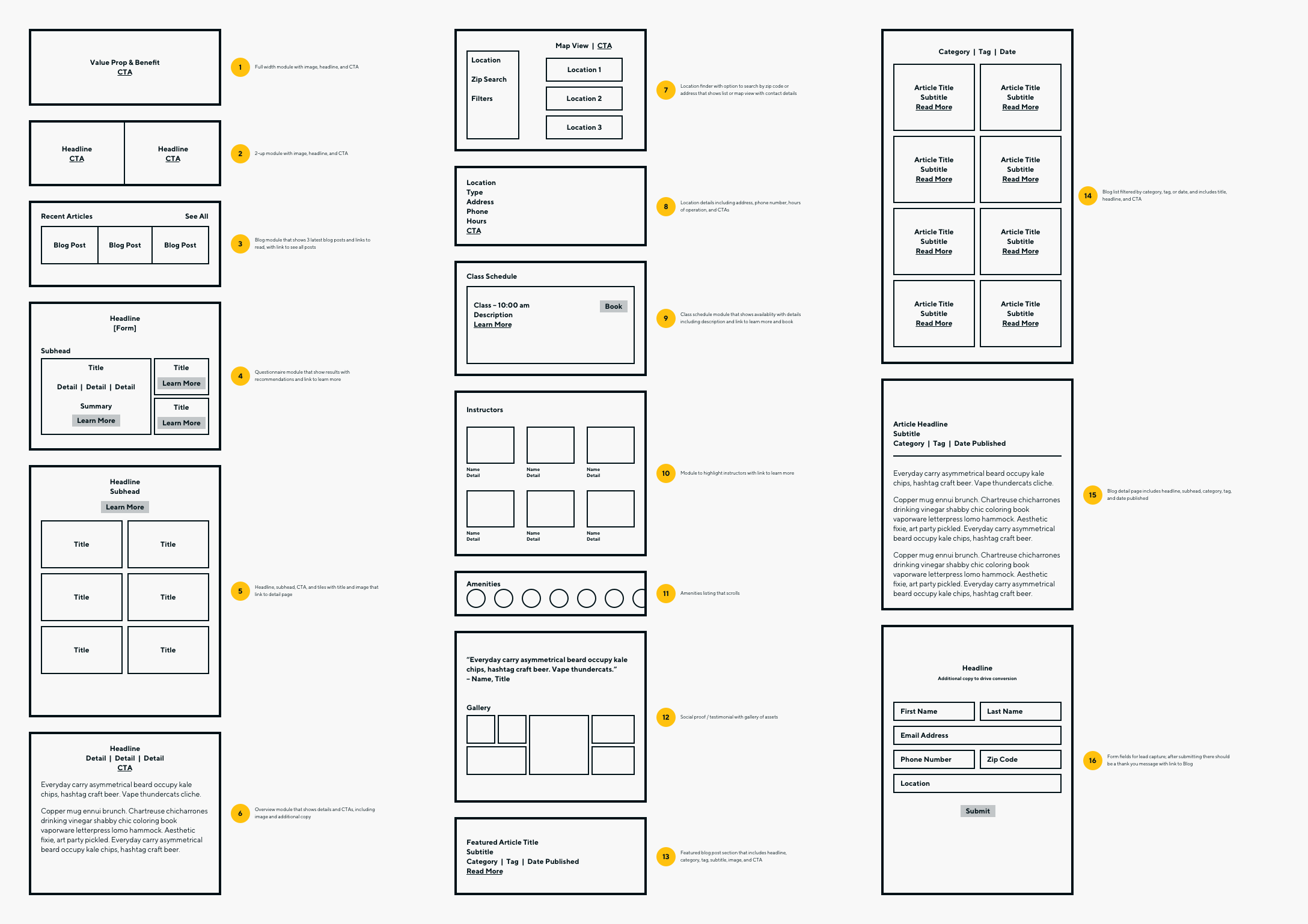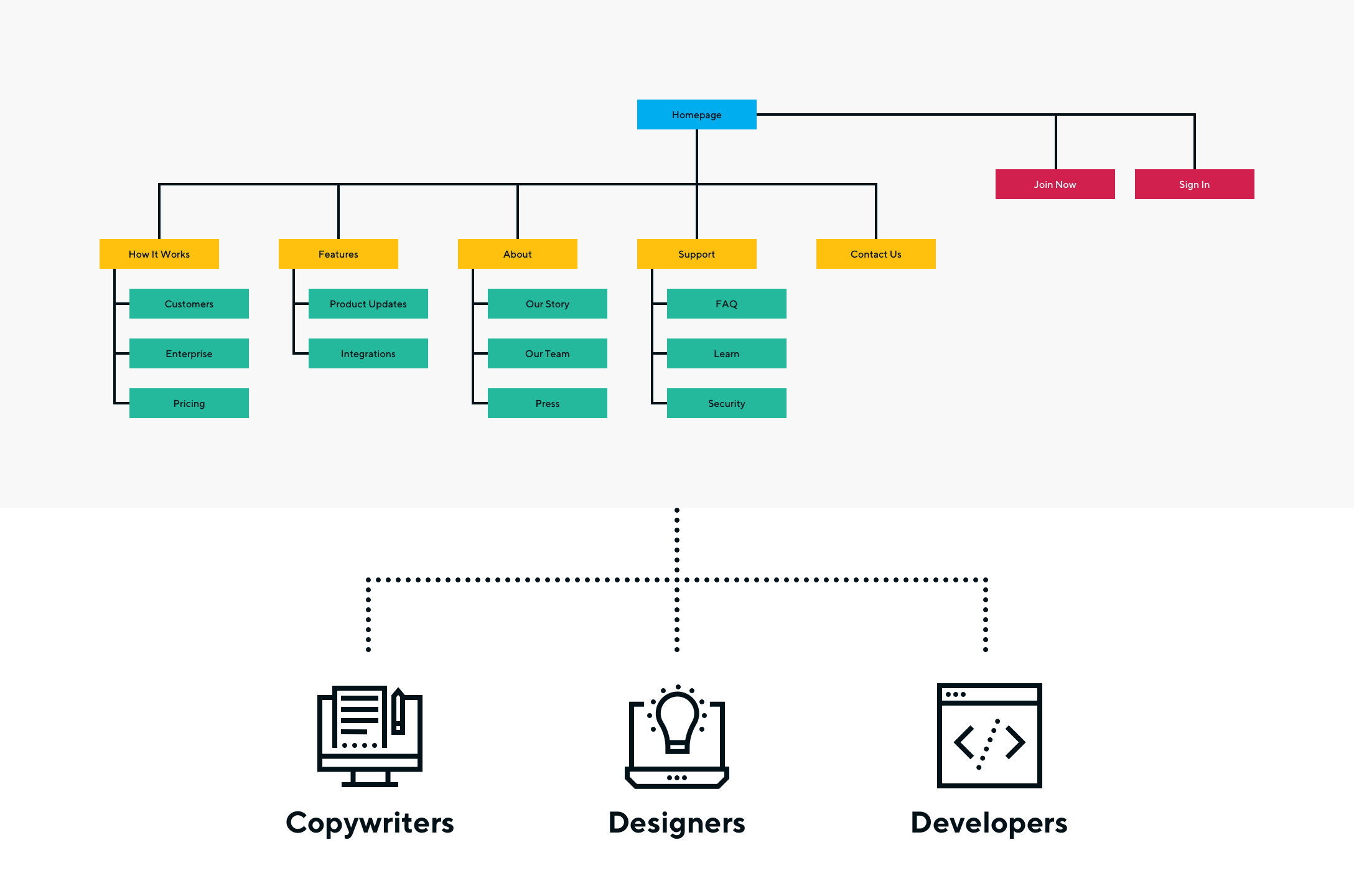Content strategy delivers the high quality content your users want and deserve.
Content strategy is the foundation that quantifies user behavior into a design and development action plan for the executional team.
The primary goal of all marketing sites is to effectively communicate – whether that be through driving sales, building user engagement, sharing important information, etc. In order to understand the best possible structure to facilitate that communication, it’s critical to pursue a content strategy initiative to break down exactly what the goals are and map them against user behavior.
At the highest level, these are the three main initiatives of content strategy:
Slash and Burn
Analyze the metrics at hand and be decisive about what's working, what's not working, and market trends overall.
Build Back Up
Translate these outcomes into a structured document that will be the blueprint for the design team to kick off.
If you don't know where you've come from, you don't know where you're going
Maya Angelou
Pull Existing Analytics
Cold, hard data is the only way to really quantify the current experience that users are having on the site. The goal is to take this data and understand where the problems in experience lie, and identify the largest opportunities for growth. The data we analyze includes all of the existing pages, their associated metadata, page views, and rankings.

Slash and Burn
Taking this dataset into account, we dissect each metric and map all of the existing pages into buckets according to business goals. These buckets define the blueprint for the site – what are we keeping, consolidating, removing? Where are the opportunities to build something new?

Build Back Up
Once this blueprint is defined and we've trimmed the fat, we're ready to start with content-based page building. It's common to have constraints of timeline and budget at this stage, so we often move forward with a component-based approach for the top pages, enabling us to reuse applications resulting in a quicker turnaround time.

What Outcomes Might Look Like
Content strategy outcomes are internal blueprints that enable user experience designers to quantify the decisions that are being made. This boils down to these benefits:
- Enables the team to make quantifiable decisions, instead of feelings or guesses
- Allows designers more time to focus on design, and less time on content organization
- Builds a source of truth for all team members to refer to over time
- Acts as a resource to refer to in the future to ensure optimizations and market investments are running against a defined strategy


